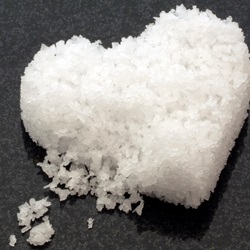
Our top stories of 2025
We're looking back at the ACP Hospitalist articles that attracted the most readers this year.

We're looking back at the ACP Hospitalist articles that attracted the most readers this year.

Traditional practice has been to restrict sodium, but recent research shows some patients may actually benefit from salt supplements.
Protocols using subcutaneous insulin have brought diabetic ketoacidosis (DKA) into the domain of hospitalists.
Although restricting blood transfusions to patients with lower hemoglobin thresholds has become the rule, there are some important exceptions.
The lead author of the 2024 guideline on perioperative cardiovascular evaluation highlights important changes included in it.
Recommendations on the use of platelets in lumbar puncture, central venous catheter placement, and other procedures have changed. The lead author of new guidelines explains.

Despite academic hospitalists' contributions to medicine, lack of a clear definition of the role threatens its visibility and sustainability.

Teaming substance use navigators with hospital clinicians helped one hospital better tackle substance use disorder.

The FDA also announced the first drug approval under its new priority voucher pilot program.
A very small trial compared measures of respiratory effort in the 24 hours after extubation by whether patients were randomized to high-flow nasal oxygen or conventional oxygen therapy and did not find statistically significant differences.
Hospitalists trained in point-of-care ultrasound (POCUS) found that left atrial anteroposterior diameter was a more specific and sensitive indicator of left atrial enlargement than visual assessment of the left atrium-to-aorta diameter, although both worked reasonably well.
More than a third of patients hospitalized with acute heart failure had at least one cardiovascular-kidney-metabolic comorbidity, which the study defined as prior myocardial infarction, impaired kidney function, and diabetes.
The “social admissions” pathway at a hospital in Nova Scotia was often used for older adults with cognitive impairment, while younger adults admitted under this pathway frequently had alcohol use disorder and intellectual disabilities, a retrospective study found.
Point-of-care ultrasound (POCUS) is no longer the Wild West of academic internal medicine, with multiple recent guidance documents issued.

Routine use of cardiopulmonary point-of-care ultrasonography (POCUS) led to a 30.3% reduction in expected length of stay in patients with undifferentiated dyspnea.